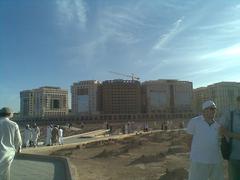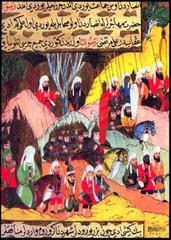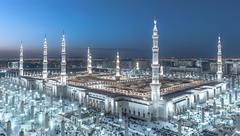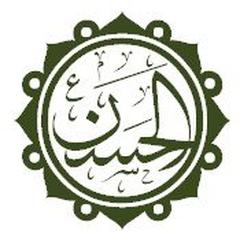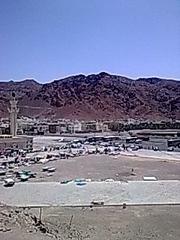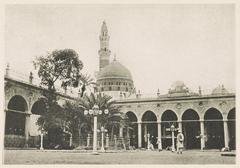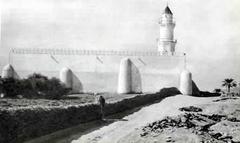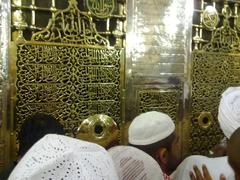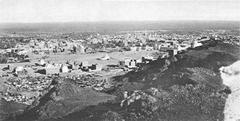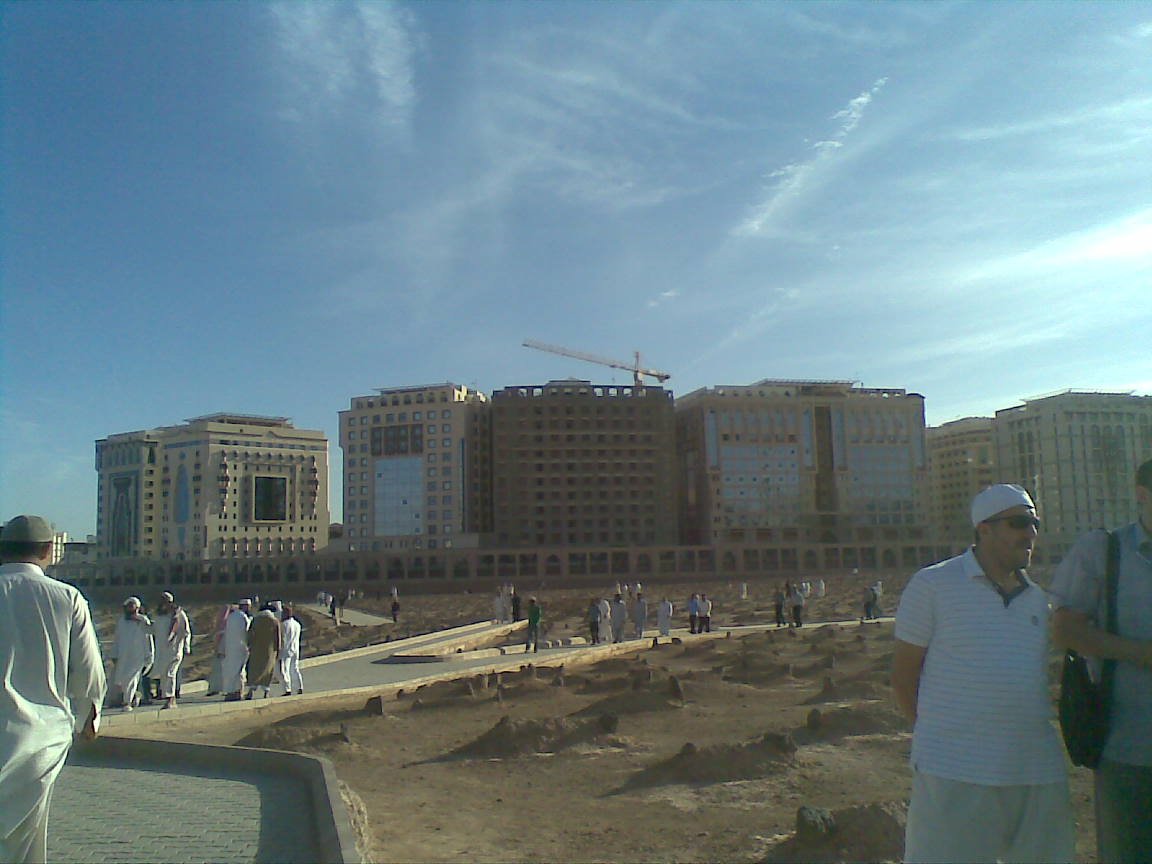
Al-Baqi Visiting Hours, Tickets, and Medina Historical Sites: The Definitive Guide
Date: 14/06/2025
Introduction: The Legacy of Al-Baqi’ Cemetery
Jannat al-Baqi’, commonly known as Al-Baqi’ Cemetery, stands as one of the most spiritually revered and historically significant Muslim burial grounds in the world. Situated adjacent to Al-Masjid an-Nabawi (the Prophet’s Mosque) in Medina, Saudi Arabia, Al-Baqi’ is the resting place for thousands of the Prophet Muhammad’s family, companions, and iconic Islamic scholars. Since its establishment in 622 CE, the cemetery has expanded from an unassuming tract covered in Arabian boxthorn to a sacred space encompassing more than 175,000 square meters. Its evolution reflects both the growth of the early Muslim community and changing architectural and religious attitudes over time.
This guide provides essential information for visitors, including up-to-date visiting hours, ticket policies, etiquette, accessibility, and highlights of Medina’s nearby historical sites. Whether you are a pilgrim, student of history, or spiritual traveler, this guide ensures you experience Al-Baqi’ with the respect and context it deserves.
Historical Background of Jannat al-Baqi’
Origins and Early Development
Chosen by the Prophet Muhammad himself shortly after his migration to Medina, the original site of Al-Baqi’ was a modest plot outside the city walls. The first companion buried there was Uthman ibn Maz’un. Over time, the cemetery expanded, incorporating the graves of prominent figures and evolving into a focal point for the Medina community. Its proximity to Masjid al-Nabawi amplifies its spiritual significance, drawing millions each year (The Muslim Vibe, Saudipedia).
Architectural Features and Transformations
During the Ottoman era, Al-Baqi’ was adorned with domes, minarets, and ornate enclosures for some graves, reflecting the period’s architectural grandeur. However, these structures were demolished in the 19th and early 20th centuries due to religious reforms under the Wahhabi movement, which emphasized simplicity and prohibited grave veneration (al-Shia.org). Today, the cemetery’s appearance is marked by unadorned graves, emphasizing humility and equality in death.
Religious and Cultural Significance
Al-Baqi’ holds immense spiritual importance for Muslims worldwide. The Prophet Muhammad encouraged visiting cemeteries to reflect on mortality and pray for the deceased. The cemetery is especially significant for Shia Muslims, as it is the burial site of several Imams and numerous family members of the Prophet. Sunni Muslims also regard it as a place of deep reverence due to the presence of the Prophet’s wives, companions, and early Islamic leaders (Yabiladi).
Notable Burials at Al-Baqi’
Family Members of the Prophet Muhammad:
- Fatima al-Zahra: The Prophet’s beloved daughter (location of grave debated).
- Hasan ibn Ali: Grandson and second Shia Imam.
- Ibrahim ibn Muhammad: The Prophet’s infant son.
- Aisha, Hafsa, Umm Salama, and other wives (Mothers of the Believers).
- Al-Abbas ibn Abd al-Muttalib: The Prophet’s uncle.
- Safiyyah bint Abd al-Muttalib: The Prophet’s aunt.
Four Shia Imams:
- Hasan ibn Ali (2nd Imam)
- Ali ibn Husayn (Zayn al-Abidin, 4th Imam)
- Muhammad al-Baqir (5th Imam)
- Ja’far al-Sadiq (6th Imam)
(ABNA24, Wikishia)
Companions and Scholars:
- Uthman ibn Affan: The third Caliph, whose grave became part of Al-Baqi’ after expansion.
- Othman bin Maz’un: The first companion buried in Al-Baqi’.
- Malik ibn Anas: Founder of the Maliki school of Islamic jurisprudence.
- Halima al-Sa’diyya: The Prophet’s foster mother.
Other Notable Figures:
- Numerous sahabah (companions), tabi’un (successors), and martyrs from early Islamic battles, including the Battle of Uhud (Madain Project, Madain Project Notable Interments).
Visiting Al-Baqi’ Cemetery: Practical Information
Visiting Hours
- General Schedule: Al-Baqi’ is open to visitors after Fajr (dawn) and Asr (afternoon) prayers daily. Visiting hours may change during Hajj, Ramadan, and other religious occasions (The Islamic Information).
- Recommendation: Confirm timing with local authorities or your hotel before your visit.
Admission and Tickets
- Entry: Free of charge; no tickets or permits required.
- Eligibility: Only Muslims are permitted to enter. Non-Muslims may view the site from outside its walls (Ewan Dar Al-Hijrah).
Dress Code and Visitor Etiquette
- Modest Attire: Men and women must wear clothing covering arms and legs. Women should wear an abaya and headscarf.
- Conduct: Maintain silence and decorum; avoid loud conversation, grave veneration, or physical contact with graves.
- Photography & Videography: Strictly prohibited inside the cemetery.
- Respect for Rituals: Silent du’a (prayer) is encouraged, but overt rituals are discouraged in accordance with local religious guidelines (Medium).
Accessibility
- Physical Access: The cemetery is accessible by foot from Al-Masjid an-Nabawi and nearby hotels. Terrain is sandy and uneven; not wheelchair accessible.
- Facilities: No restrooms, shops, or refreshments are available inside. The nearest amenities are in the plaza next to the mosque (Rehlat).
Security and Safety
- Surveillance: Security personnel are present; bags may be checked at entrances.
- Prohibited Items: Food, drink, and commercial activities are not permitted inside Al-Baqi’.
Special Considerations for Women
- Women’s Access: Women may visit but could face timing or area restrictions depending on current regulations. Confirm with local officials before planning your visit.
How to Get There
Al-Baqi’ is centrally located in Medina’s old city, adjacent to the eastern side of the Prophet’s Mosque. It is easily reachable by foot, taxi, or ride-sharing services from most central hotels (Rehlat). For those performing Umrah or Hajj, visiting Al-Baqi’ is often included in religious itineraries.
Nearby Medina Historical Sites
While in Medina, consider visiting these significant sites:
- Al-Masjid an-Nabawi: The Prophet’s Mosque, one of the holiest mosques in Islam.
- Quba Mosque: The first mosque in Islamic history.
- Uhud Mountain: Site of the Battle of Uhud.
- Masjid Al Qiblatayn: Known for its dual qiblas.
- The Seven Mosques: A cluster of historic mosques.
- Koran Museum: Islamic manuscripts and history exhibits.
- Rashed Mall: For shopping and dining.
Preservation, Controversy, and Modern Developments
The demolition of Al-Baqi’s mausoleums in 1806 and 1925–26 remains a sensitive and controversial topic, especially for Shia Muslims who commemorate the loss on Yawm al-Hadm (Day of Destruction). Today, the Saudi government enforces strict preservation and access policies to maintain the site’s sanctity. The Al-Baqi Association, established in 2022, supports social and educational initiatives related to the cemetery (Saudipedia).
Visitor Tips and Recommendations
- Best Time to Visit: November to March (cooler months); early mornings or late afternoons to avoid heat and crowds.
- Prepare Accordingly: Bring water for consumption outside the cemetery, wear sun protection, and plan for the lack of onsite amenities.
- Language: Arabic is predominantly spoken; some signage is in English. Basic Arabic phrases or translation apps can be helpful.
- Emergency Contacts: Security staff are present and Medina is well-policed.
Frequently Asked Questions (FAQ)
Q: What are Al-Baqi’ visiting hours?
A: Generally open after Fajr and Asr prayers. Hours may change during peak religious periods; verify locally.
Q: Is there an entrance fee or tickets required?
A: No, entry is free and does not require tickets.
Q: Can non-Muslims visit Al-Baqi’?
A: Non-Muslims are not permitted inside but may view from outside.
Q: Are women allowed to visit Al-Baqi’?
A: Yes, but may be subject to area or time restrictions.
Q: Is photography allowed?
A: No, photography and videography are strictly prohibited inside the cemetery.
Q: Is the cemetery wheelchair accessible?
A: No, the terrain is uneven and not suitable for wheelchairs.
Q: Are guided tours available?
A: Not officially within the cemetery, but some Medina travel agencies offer historical walking tours including Al-Baqi’.
Visuals and Interactive Elements
[Insert high-quality images of Al-Baqi’ Cemetery with descriptive alt tags such as “Al-Baqi’ Cemetery entrance in Medina” and “Graves at Al-Baqi’ reflecting Islamic simplicity.“]
[Embed interactive map showing Al-Baqi’s location relative to Al-Masjid an-Nabawi and nearby attractions.]
Conclusion: Honoring the Legacy of Al-Baqi’
Al-Baqi’ Cemetery endures as a powerful symbol of Islamic humility, heritage, and spiritual reflection. Despite the loss of its historic monuments, it remains a place for pilgrims and visitors to connect with the early Muslim community and honor the memory of Islam’s most revered figures. By observing visiting hours, site etiquette, and local guidelines, you contribute to the preservation and dignity of this sacred site.
Sources and Further Reading
- Everything You Need to Know about Jannat al-Baqi (The Muslim Vibe)
- Jannat al-Baqi Cemetery Article (Saudipedia)
- Jannat al-Baqi Cemetery Information (Welcome Saudi)
- Jannat al-Baqi is Islam’s Oldest Cemetery (Yabiladi)
- Al-Baqi Cemetery and its Demolition (al-Shia.org)
- Important Facts about Jannat al-Baqi (Daneel Yunus)
- The Significance of Madinah or Medina (Visit Al Madinah)
- Al-Baqi Cemetery: The Silent Witness to Erased History (ABNA24)
- Jannat al-Baqi’ Cemetery Notable Burials (Madain Project)
- Visiting Al-Baqi’ Cemetery (The Islamic Information)
- Jannat al-Baqi’ Medina Visitor Guide (Rehlat)
- Al-Baqi’ Official Guide (Audiala)
- Al-Baqi’ Officially Known as Janat al-Baqi’ (Medium)
